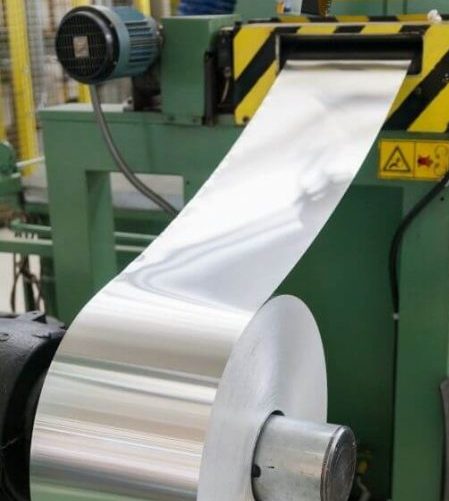Exploring the Function of Metal Stamping in Modern Engineering Solutions
Exploring the Function of Metal Stamping in Modern Engineering Solutions
Blog Article
Steel Stamping Advancements: Elevating Manufacturing Processes for Superior Results
In the realm of producing processes, steel marking has actually long been a cornerstone method for creating an array of accuracy elements. With the relentless march of technological improvement, the landscape of steel stamping is going through a considerable makeover.
Evolution of Metal Marking Strategies

In addition, advancements in product scientific research have caused the development of high-strength alloys that can currently be perfectly marked into complex shapes, providing to a wider array of commercial applications. The combination of robotics and expert system has even more optimized the stamping process by improving rate and accuracy while minimizing the risk of human error.

Impact of Advanced Materials
Have sophisticated materials transformed steel marking procedures dramatically in the production market? By utilizing products such as high-strength alloys, advanced compounds, and innovative finishes, steel marking processes can now generate parts that are lighter, stronger, and much more long lasting than ever before.
These advanced materials offer superior mechanical properties, corrosion resistance, and thermal stability, enabling producers to fulfill the demands of modern-day sectors such as aerospace, auto, and electronics. In addition, using innovative products in metal stamping has promoted the production of intricate geometries and intricate layouts that were formerly unattainable with conventional approaches.
Furthermore, the execution of innovative products has actually led to reduced product waste, lower manufacturing costs, and much shorter preparations, making metal stamping procedures extra affordable and sustainable. As modern technology proceeds to breakthrough, the effect of advanced products on steel stamping processes is anticipated to drive further advancement and boost the competition of suppliers in the global market.
Automation in Metal Stamping
The development of metal marking procedures driven by the integration of innovative materials has actually established the stage for significant developments in automation within the manufacturing sector. Automation in metal stamping has actually changed production processes, enhancing efficiency, precision, and total result top quality. Through the utilization of robotics, sensors, and computer-controlled systems, tasks that were taxing and once hand-operated can now be executed with unrivaled rate and precision.
Automation in metal marking not only accelerates production prices but additionally makes certain uniformity in the manufacturing procedure. By lessening human intervention, the risk of mistakes is substantially decreased, leading to higher levels of product harmony and reliability. Furthermore, automation enables makers to undertake complicated marking tasks that would be not practical or difficult to attain manually.
Moreover, automation in steel stamping adds to a much safer working environment by decreasing the need for staff members to take part in repeated or unsafe jobs - Metal Stamping. This shift towards automation not only enhances efficiency but additionally leads the method for the future of manufacturing, where modern technology plays a main role in driving operational excellence
Quality Assurance and Inspection Solutions
With a concentrate on accuracy and reliability, high quality control and examination systems play a critical function in ensuring item quality in metal stamping processes. These systems are designed to keep track of every stage of manufacturing, from material evaluation to the last item, to ensure that all parts meet the needed criteria. By implementing advanced innovations such as optical inspection systems, coordinate gauging devices (CMM), and automated gauging tools, makers can find also the tiniest inconsistencies in dimensions, surface high quality, and total stability of stamped components.

Sustainability Practices in Steel Stamping
Building upon the structure of accuracy and dependability established via top quality control and examination systems, the assimilation of lasting practices in steel stamping processes is progressively coming to be a centerpiece for suppliers looking a knockout post for to reduce environmental effect and optimize source application. Sustainability techniques in steel stamping encompass a range of initiatives focused on minimizing waste generation, energy consumption, and greenhouse gas exhausts throughout the production process.
One key aspect of sustainability in steel marking is the adoption of eco-friendly materials and technologies that advertise recyclability and waste decrease. By using recycled materials and applying energy-efficient equipment, manufacturers can decrease their carbon impact and add to an extra sustainable production cycle. Additionally, optimizing production procedures to decrease material waste and energy usage not just profits the setting yet likewise results in set you back savings for companies in the lengthy run.
Furthermore, the implementation of sustainable practices in metal stamping can enhance brand track record and attract environmentally conscious consumers. As sustainability continues to gain importance in the production industry, incorporating environment-friendly campaigns right into metal stamping procedures is necessary for long-term success and competition on the market.
Final Thought
In verdict, metal marking strategies have actually substantially evolved in time, integrating advanced materials and automation to enhance making procedures. Quality control and evaluation systems play a critical role in making sure superior results, while sustainability techniques are increasingly being applied to decrease environmental effect. These technologies in steel stamping have actually changed the industry, resulting in published here extra sustainable and reliable production approaches for various industries.
Metal stamping, once a manual and labor-intensive process, has transformed into a highly automated and sophisticated method check of shaping steel sheets right into numerous kinds and layouts.Have innovative products changed steel marking procedures significantly in the manufacturing industry? By utilizing materials such as high-strength alloys, advanced compounds, and ingenious layers, steel marking processes can now produce elements that are lighter, more powerful, and more durable than ever previously.
The advancement of steel marking processes driven by the combination of sophisticated materials has set the stage for substantial developments in automation within the manufacturing industry.In conclusion, steel marking techniques have significantly developed over time, integrating innovative products and automation to enhance making processes.
Report this page